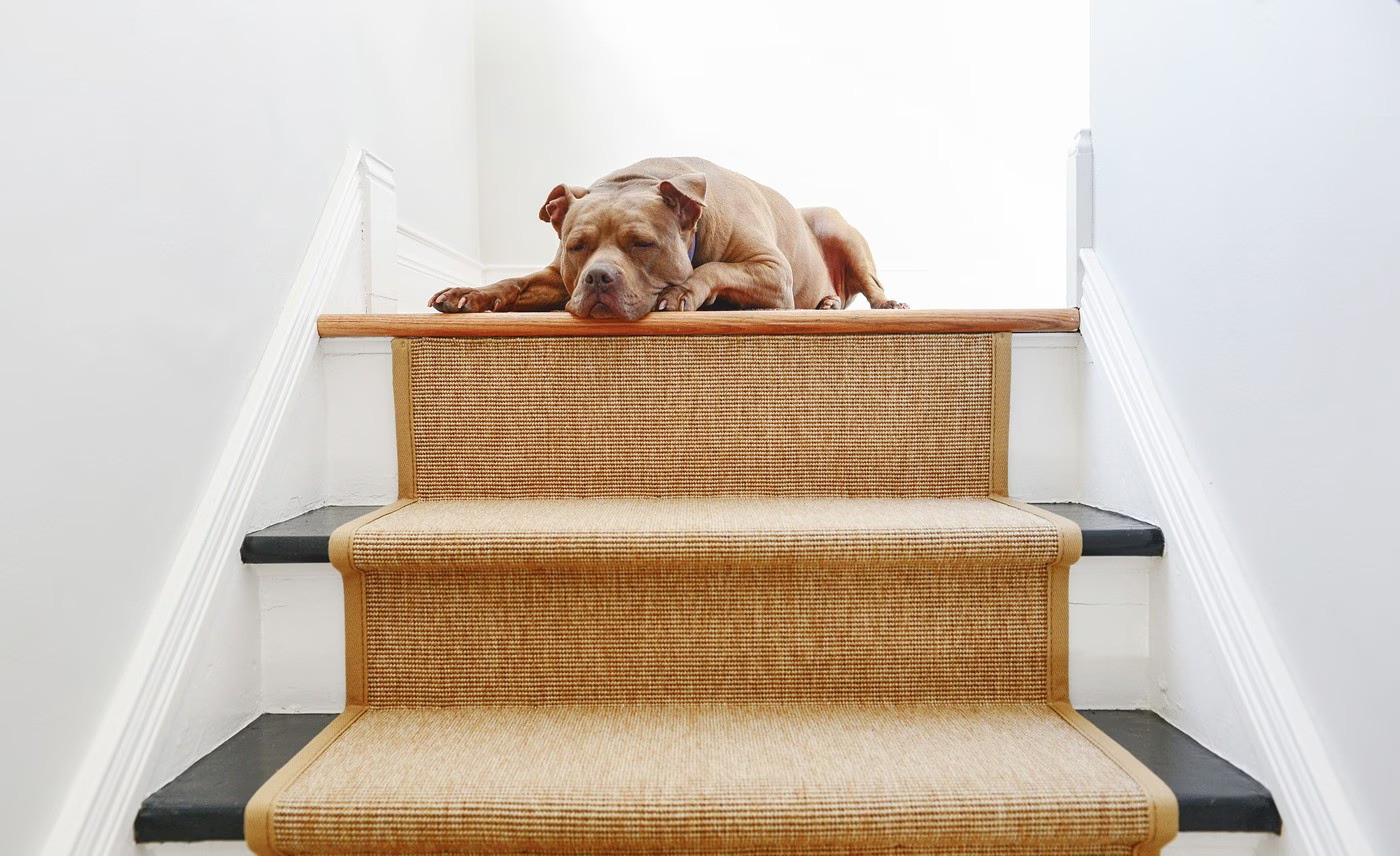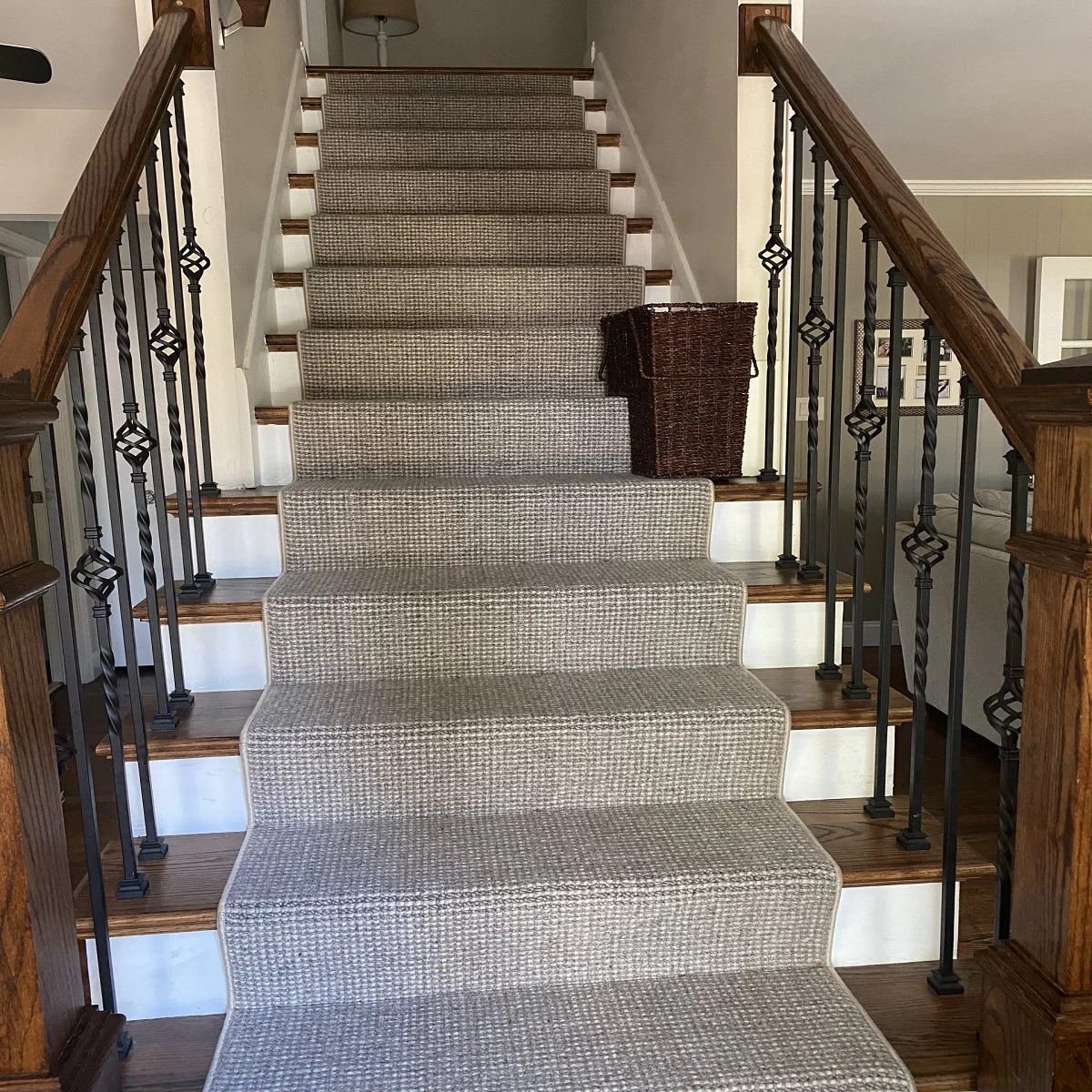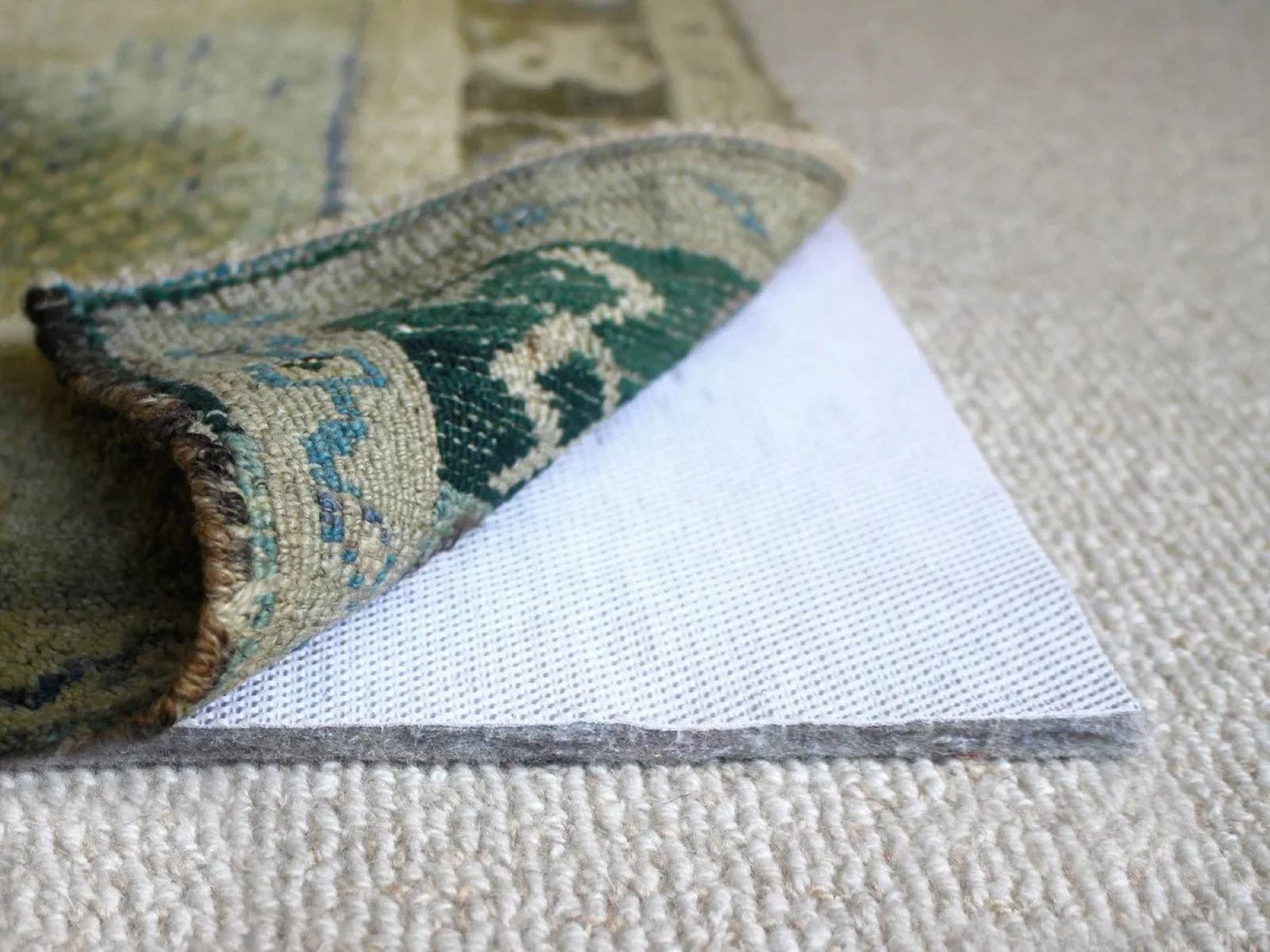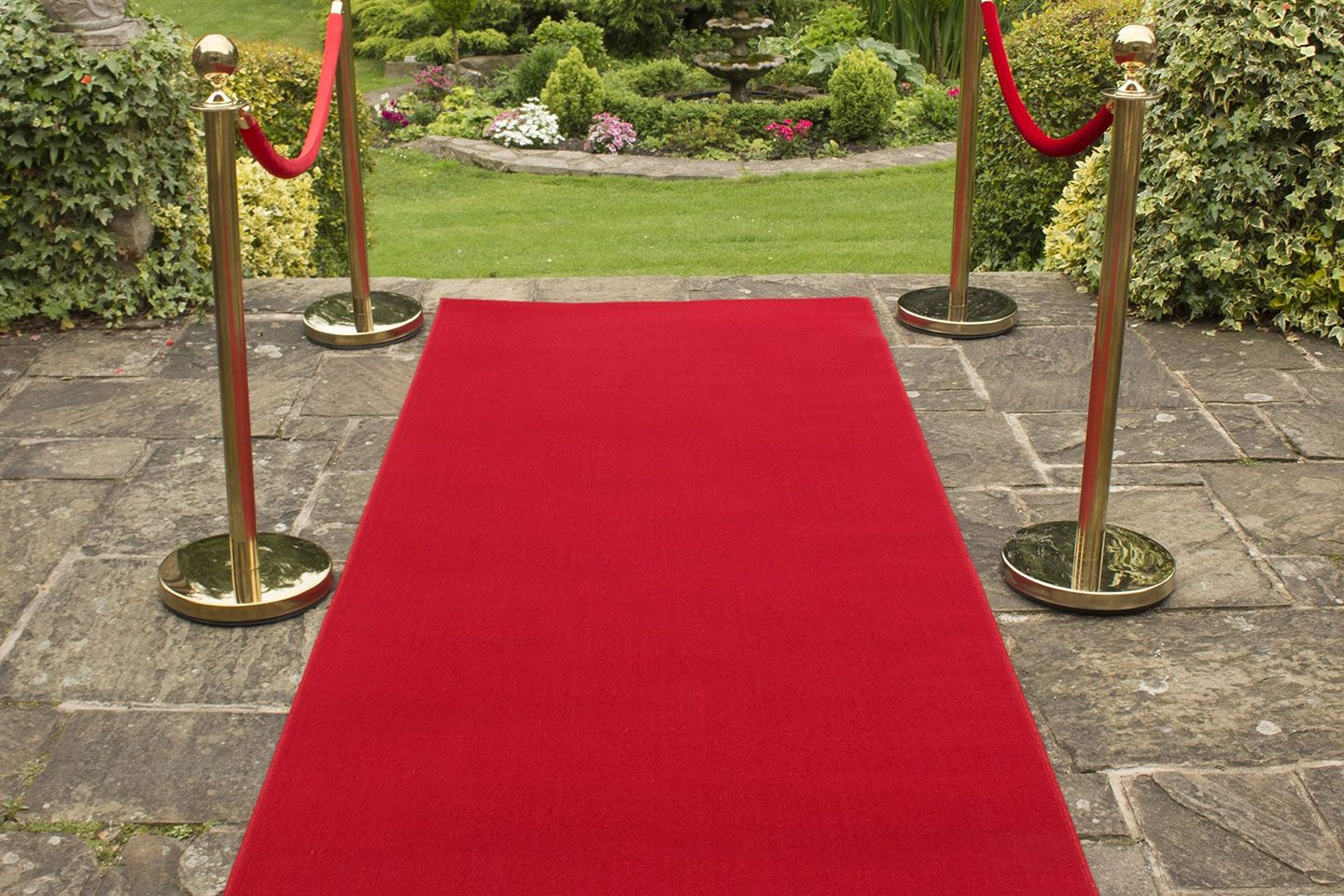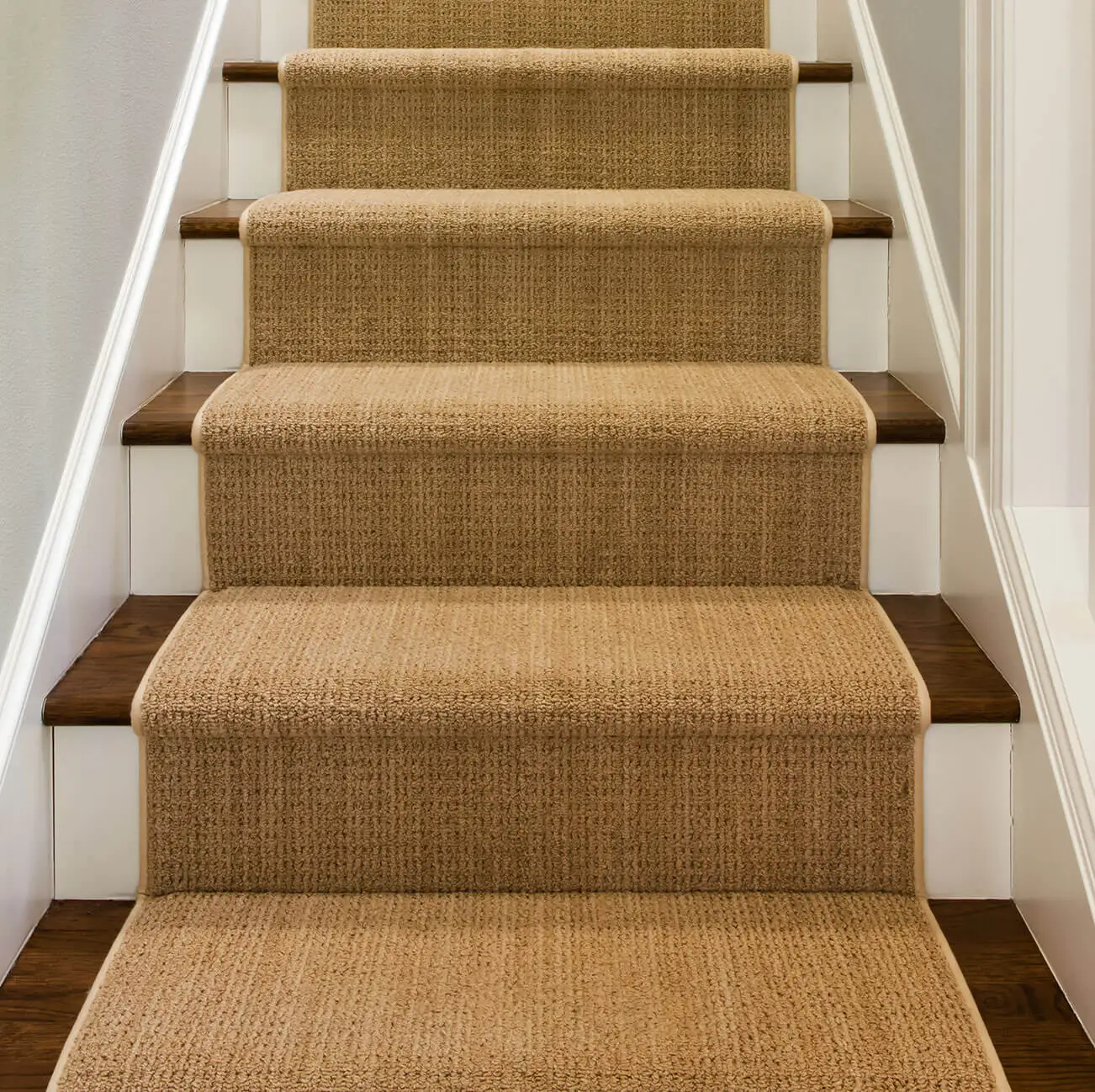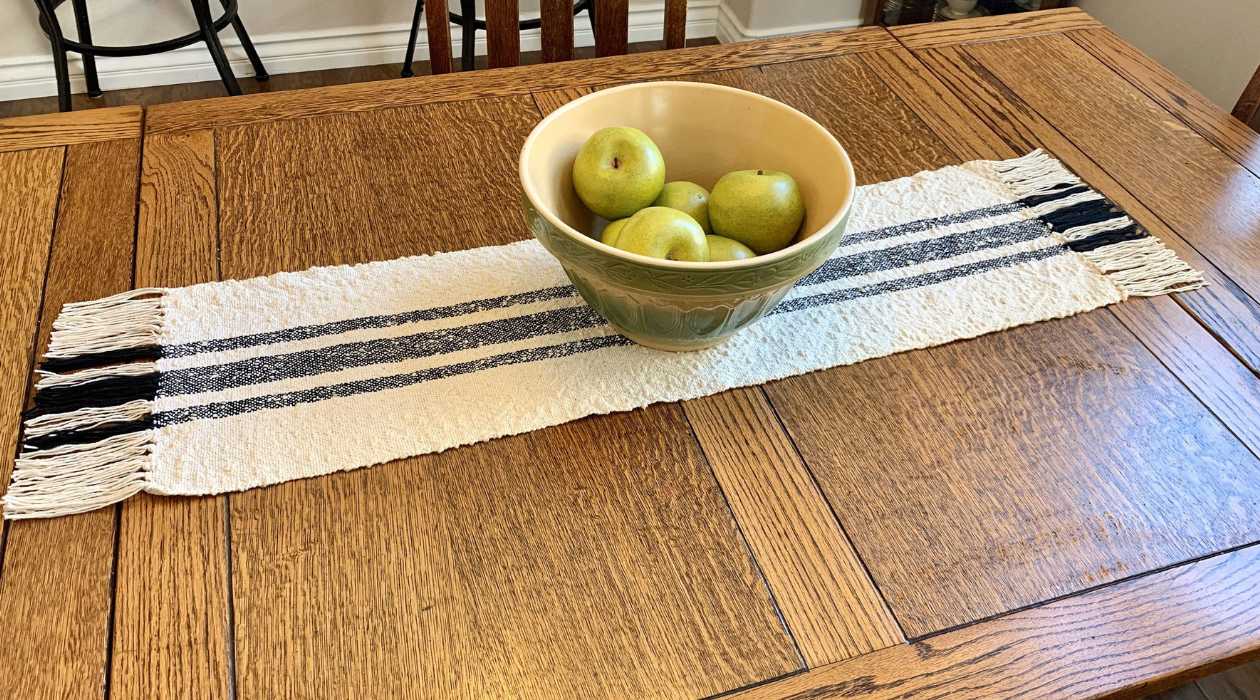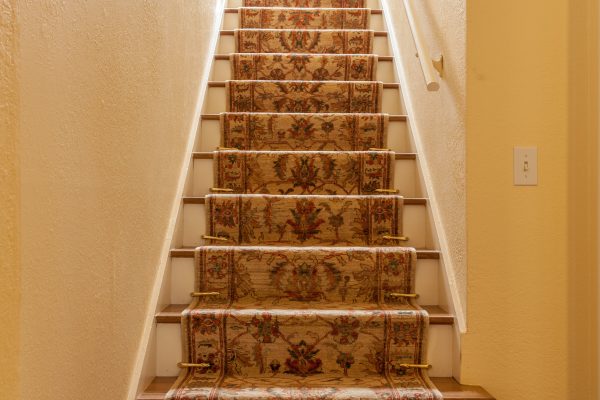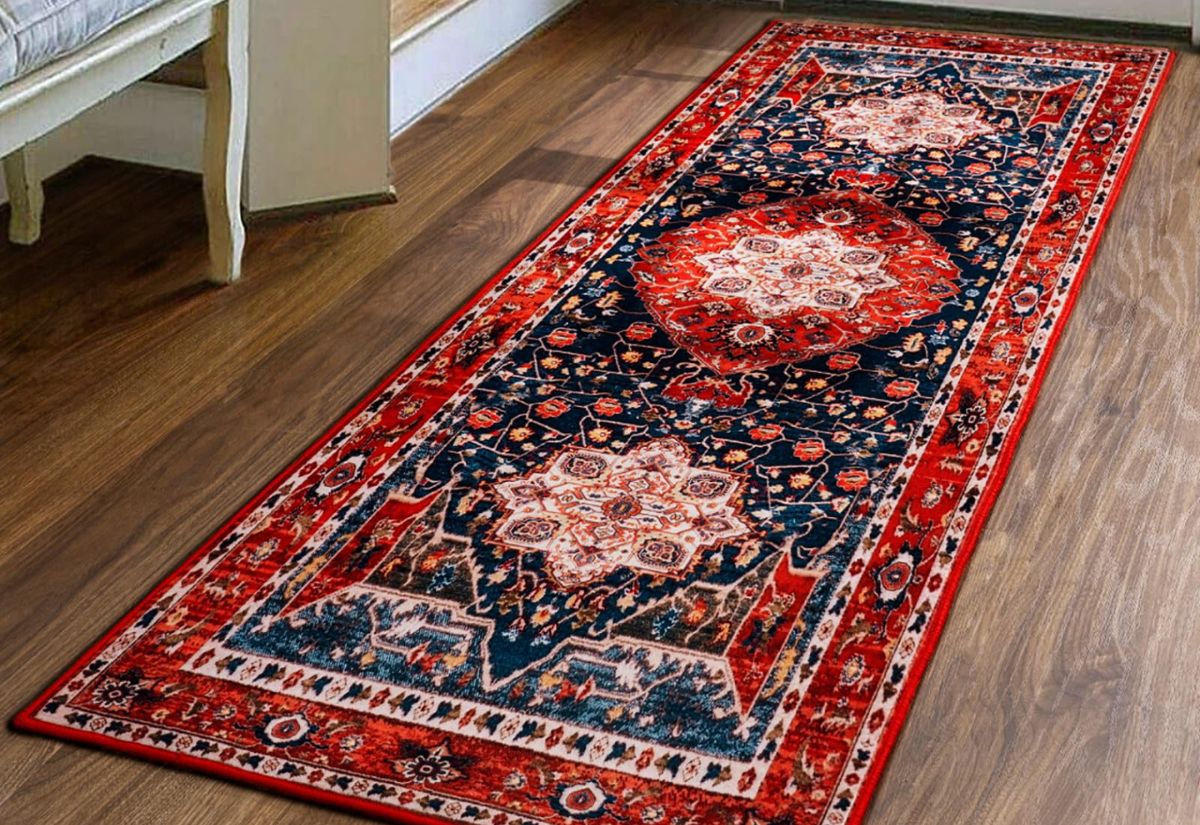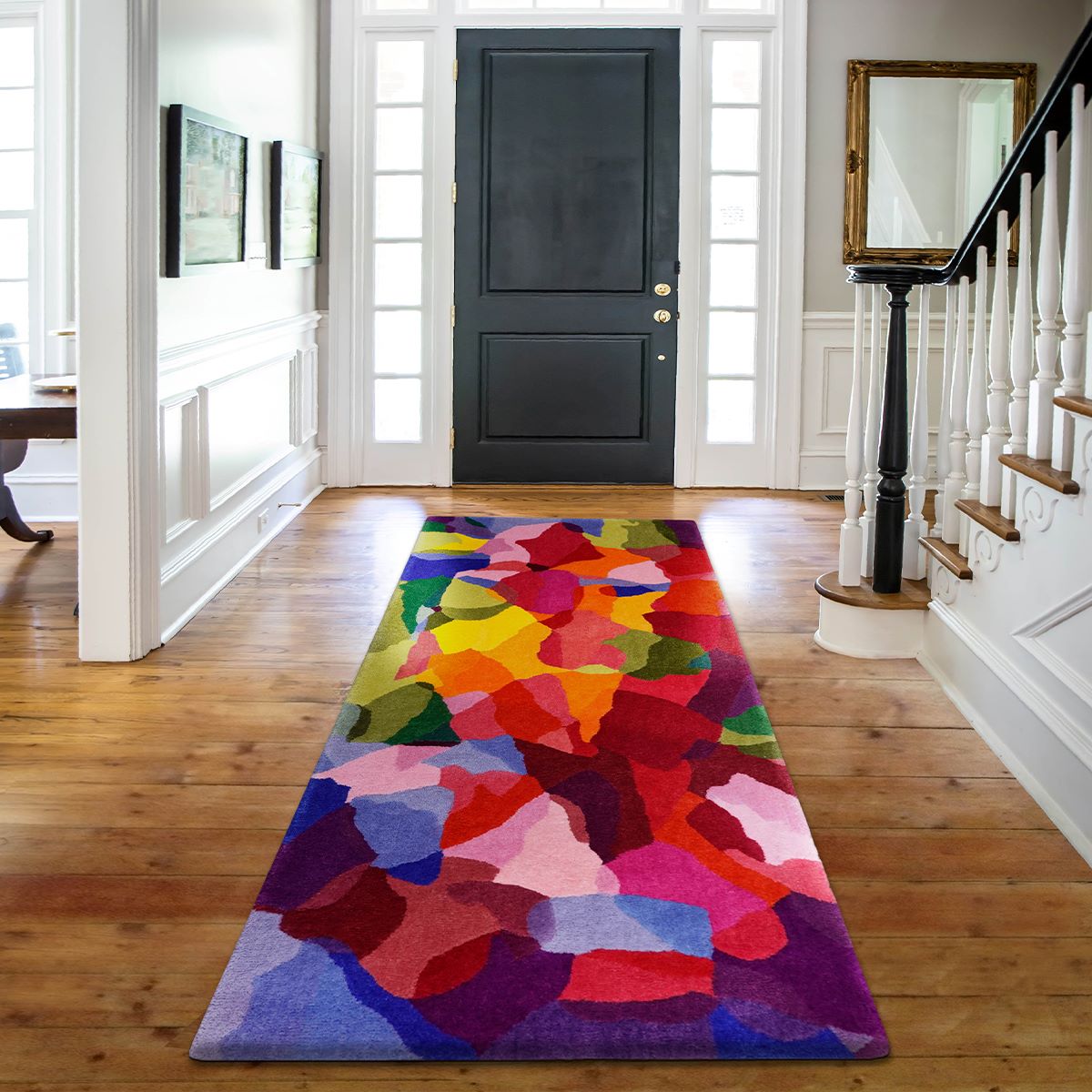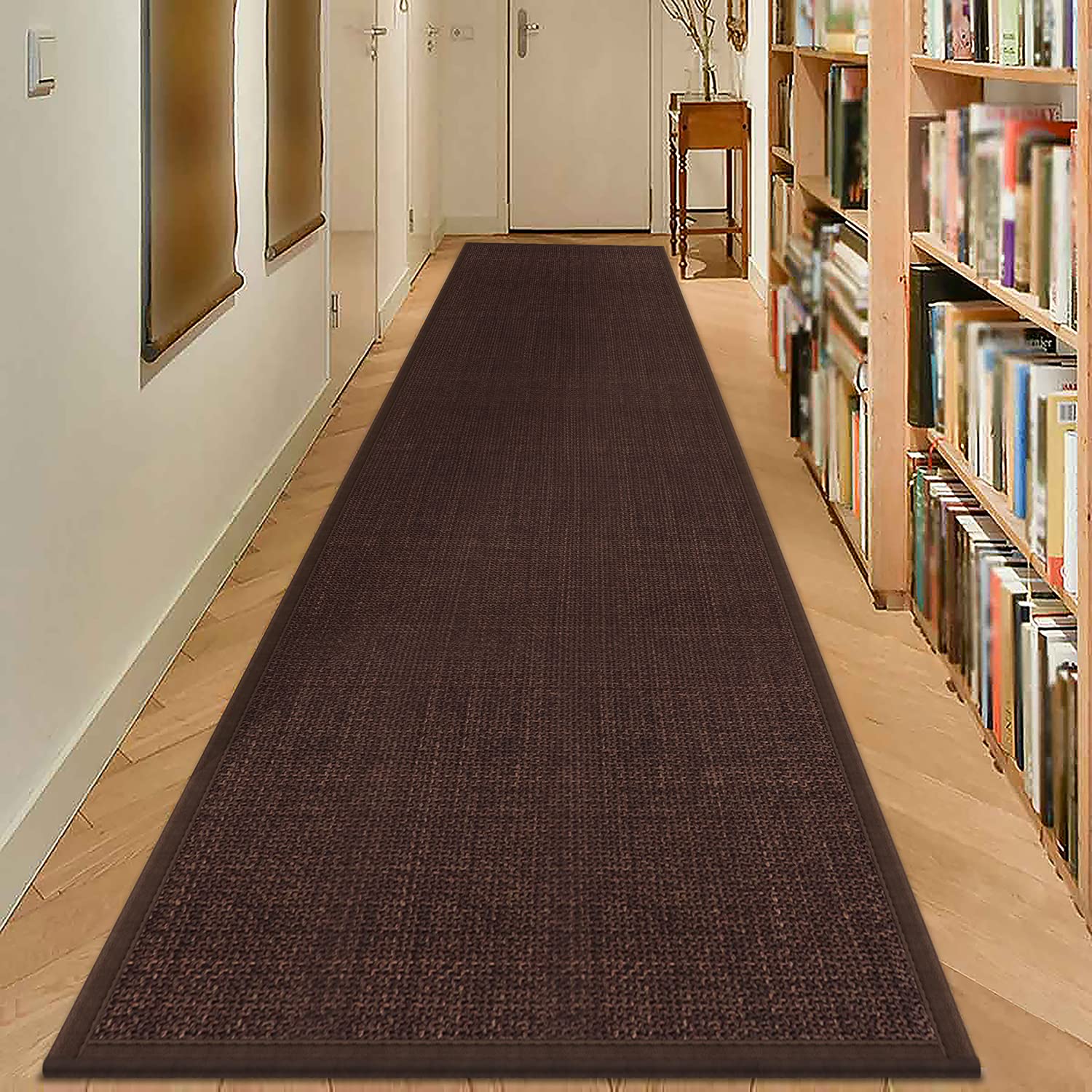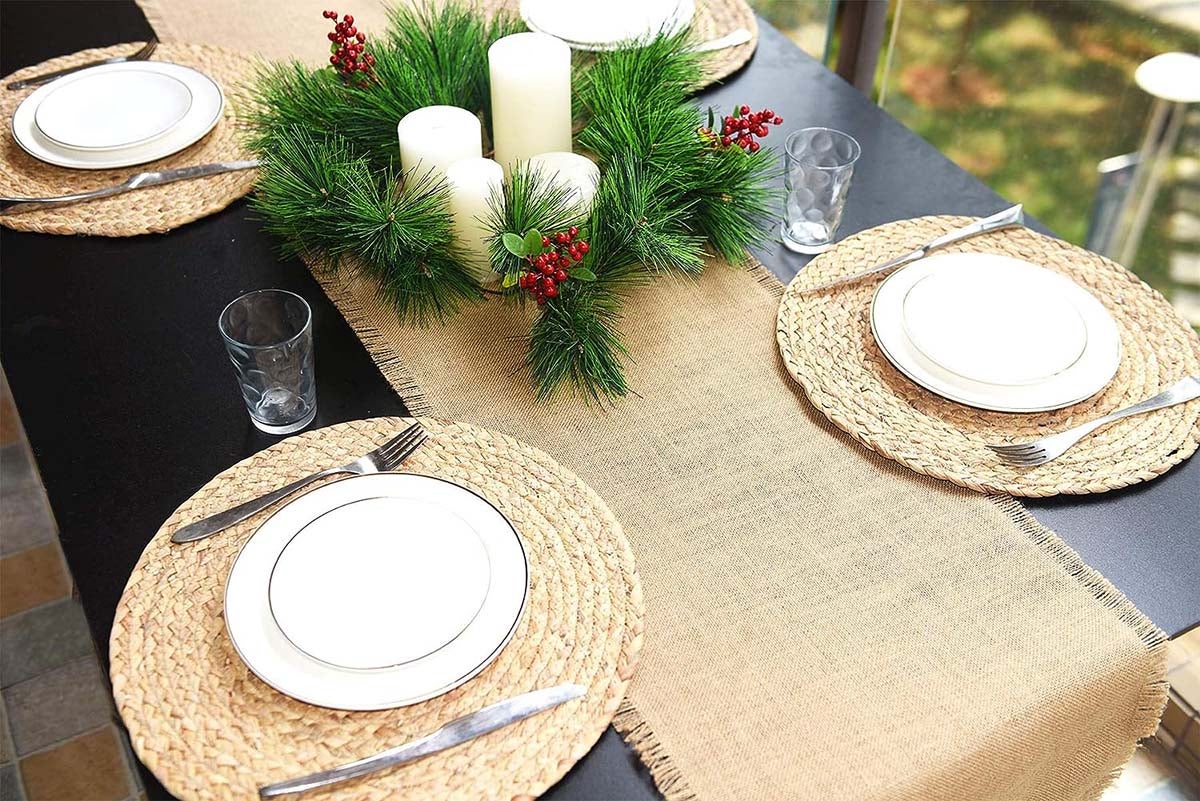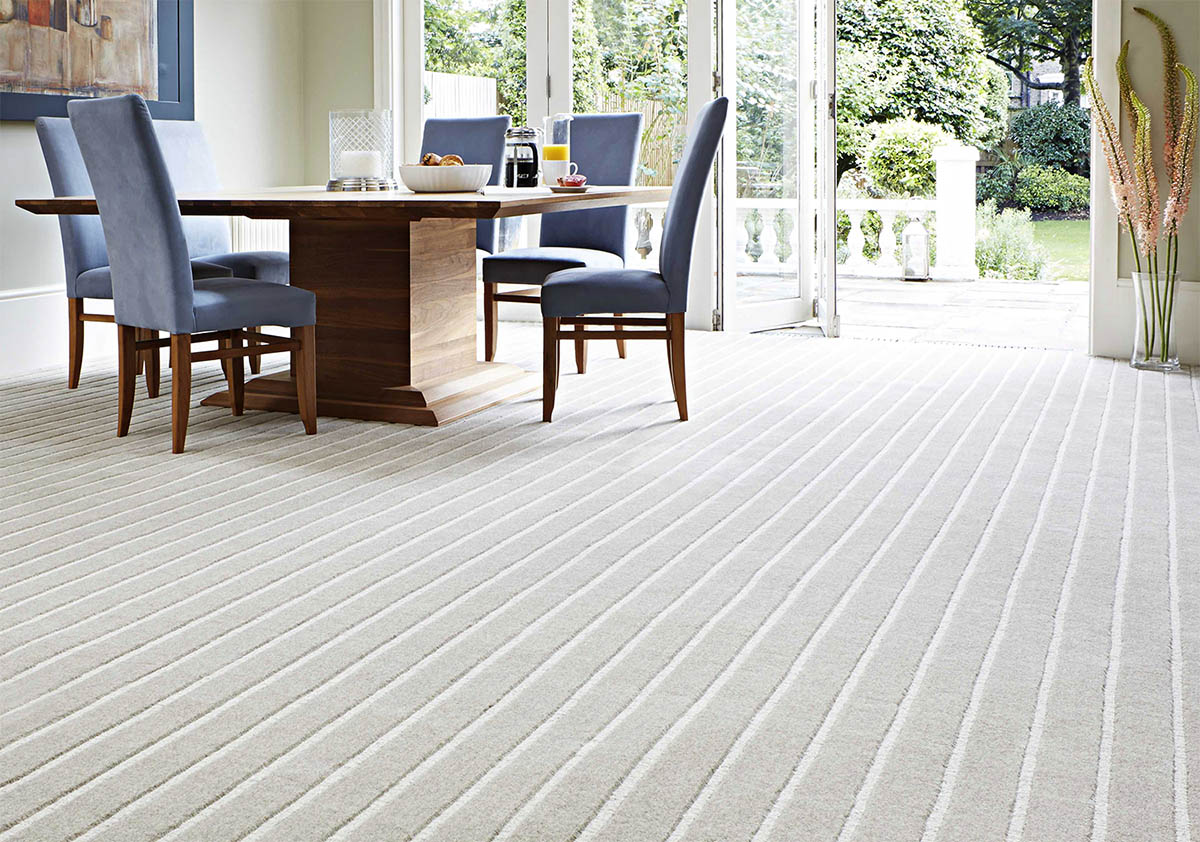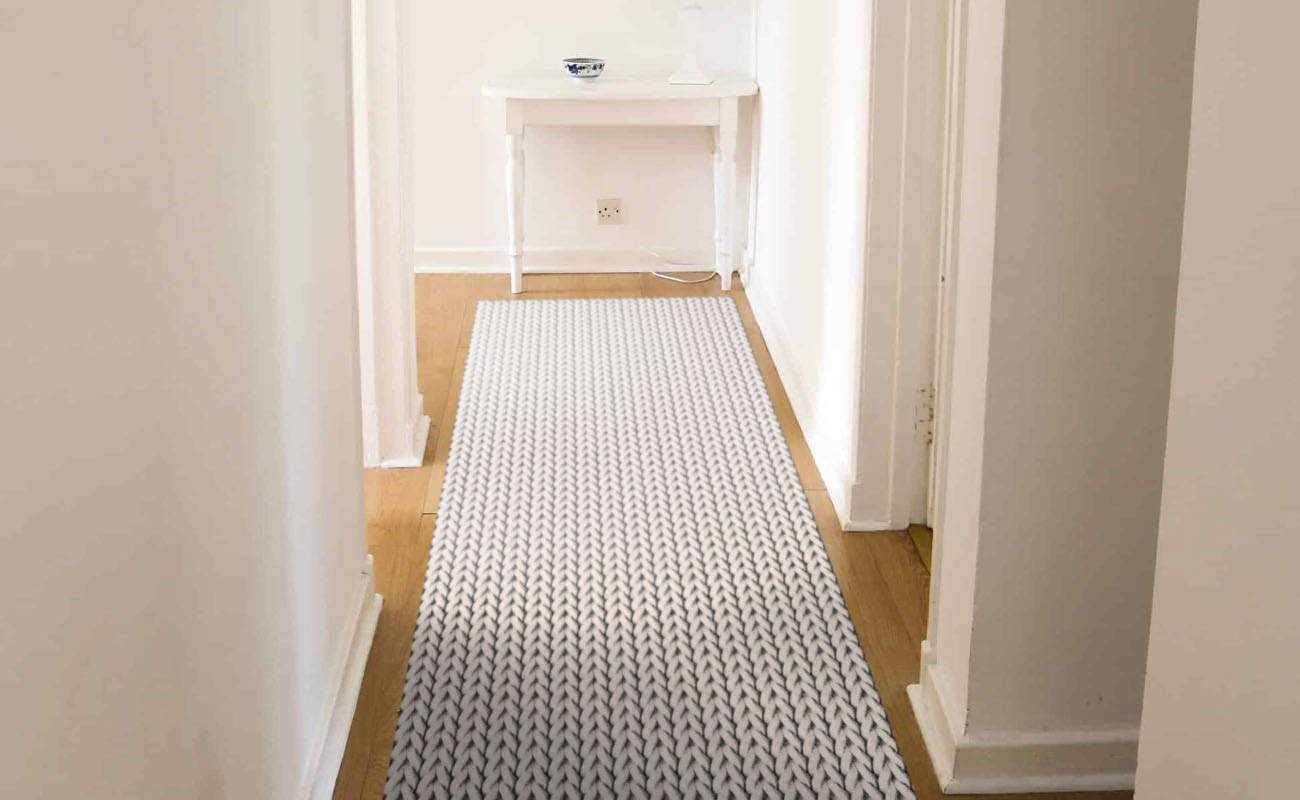

Articles
What Is A Carpet Runner
Modified: February 23, 2024
Discover the benefits and uses of carpet runners with our informative articles. Perfect for adding style and protection to your floors.
(Many of the links in this article redirect to a specific reviewed product. Your purchase of these products through affiliate links helps to generate commission for Storables.com, at no extra cost. Learn more)
Introduction
A carpet runner is a narrow strip of carpet that is used to cover and protect a specific area of flooring, typically in high-traffic areas. It is often installed on staircases, hallways, and entryways to add both style and functionality to a space. Carpet runners are an excellent choice for homeowners who want to enhance the look of their interior while also providing added safety and durability to their floors.
Carpet runners come in various lengths, widths, and designs, making it easy to find one that suits your specific needs and personal style. Whether you’re looking to add a pop of color, enhance a classic aesthetic, or introduce a modern touch to your home, there is a carpet runner out there that will meet your requirements.
Not only can carpet runners transform the appearance of a room, but they also serve a practical purpose. By covering high-traffic areas, they help to minimize wear and tear while providing a comfortable surface to walk on. Additionally, carpet runners can help to reduce noise levels, prevent slips and falls, and protect your flooring from scratches and stains.
Installing a carpet runner doesn’t have to be a daunting task. With the right tools and a bit of patience, you can easily add this functional and attractive feature to your home. In this article, we will delve into the different types of carpet runners, the materials used, the benefits they offer, considerations when choosing one, and how to properly install and maintain a carpet runner.
So, whether you’re updating your home’s interior or simply looking for a practical solution to protect your flooring, a carpet runner is a great investment. Let’s explore the world of carpet runners and discover how they can enhance your living space.
Key Takeaways:
- Carpet runners are a practical and stylish solution for enhancing safety, protecting flooring, reducing noise, and adding visual interest to high-traffic areas in homes and commercial spaces.
- When choosing a carpet runner, consider factors such as location, foot traffic, style, materials, size, and budget to ensure a seamless and visually appealing result that meets both aesthetic and practical needs.
Read more: How To Install A Carpet Runner On Stairs
Definition of a Carpet Runner
A carpet runner is a long, narrow strip of carpet that is designed to be installed on specific areas of a floor, such as staircases, hallways, and entryways. Unlike wall-to-wall carpeting, carpet runners are not intended to cover an entire room. Instead, they are used to add style, protect the underlying flooring, and provide a comfortable and safe walking surface in high-traffic areas.
Carpet runners can vary in width, ranging from around 2 feet to 4 feet, and are typically much longer than the width. They are available in various styles, patterns, and colors to suit different interior design preferences. Some runners feature traditional motifs, while others showcase contemporary designs, allowing homeowners to personalize their space and complement their existing decor.
While the most common use of carpet runners is on staircases, they can also be installed in other areas of the home where foot traffic is heavy. Hallways and entryways are prime examples. By placing a carpet runner in these areas, you can protect your floors from scratches, stains, and general wear and tear that can occur over time.
One key feature of carpet runners is their ability to enhance safety. The textured surface of the carpet provides added traction, reducing the risk of slips and falls, especially when used on staircases. Additionally, carpet runners can help dampen noise levels, making them an ideal choice for homes with multiple floors.
It’s important to note that carpet runners are not limited to residential settings. They are also commonly used in commercial spaces, such as hotels, office buildings, and retail stores. In these environments, carpet runners serve a similar purpose of protecting the flooring and creating a visually appealing environment for customers and employees.
Overall, a carpet runner is a practical and stylish solution to enhance the look and functionality of high-traffic areas in your home or commercial space. With their versatility in design and ability to protect floors, carpet runners are a popular choice for homeowners and business owners alike.
Purpose of a Carpet Runner
A carpet runner serves several important purposes in a home or commercial space. While it may seem like a simple decorative element, a carpet runner offers numerous benefits that go beyond its visual appeal. Let’s explore the key purposes of a carpet runner:
- Enhanced Safety: One of the primary purposes of a carpet runner is to improve safety, particularly on staircases. The textured surface of the runner provides additional grip, reducing the risk of slips and falls. The cushioning effect of the carpet runner also helps absorb impact and minimize injuries in case of accidental falls. Moreover, carpet runners can help prevent accidents by clearly demarcating the steps, making them more visible.
- Protecting Flooring: High-traffic areas, such as hallways and entryways, can take a toll on flooring materials. A carpet runner acts as a protective barrier, shielding the underlying flooring from scratches, stains, and daily wear and tear. This is especially important for hardwood or tile floors that are susceptible to damage. By using a carpet runner, you can extend the lifespan of your flooring and save money on potential repairs or replacements.
- Noise Reduction: Another purpose of a carpet runner is to reduce noise levels in areas where foot traffic is heavy. The soft fibers of the carpet absorb sound vibrations, leading to a quieter and more peaceful environment. This is particularly beneficial for homes with multiple levels or for commercial spaces where noise reduction is important for customer comfort and employee productivity.
- Aesthetics and Decor: Carpet runners offer a fantastic opportunity to enhance the aesthetics of a space. With a wide range of styles, patterns, and colors available, you can choose a carpet runner that complements your existing decor and sets the tone for the interior design. Whether you prefer a classic, traditional look or a more contemporary and bold design, there is a carpet runner to match your style and preferences.
- Delineating Spaces: In open-concept homes or larger rooms, a carpet runner can be used to visually divide or define different functional areas. For example, in an open living-dining room, placing a carpet runner under the dining table can create a distinct space and provide a cozy and inviting atmosphere. This not only adds visual interest but also helps create a sense of purpose and organization within a larger space.
In summary, the purpose of a carpet runner extends far beyond its decorative appeal. It provides enhanced safety, protects flooring, reduces noise, enhances the aesthetics and decor of a space, and can help delineate different functional areas. By incorporating a carpet runner into your interior design, you can elevate both the style and functionality of your home or commercial space.
Types of Carpet Runners
Carpet runners come in a variety of types, each with its own unique characteristics and purposes. The type of carpet runner you choose will depend on factors such as the location where it will be installed, the level of foot traffic, and your personal style preferences. Here are some common types of carpet runners:
- Straight Runners: Straight runners are the most common type of carpet runner and are typically used on straight staircases or long hallways. They are a straight, continuous strip of carpet that runs the length of the area. Straight runners come in various widths and lengths, allowing you to find the perfect fit for your space.
- Winding Runners: Winding runners are designed to be used on curved or spiral staircases. They are cut into specific sections to accommodate the curve of the stairs, providing a custom fit. Winding runners can add visual interest and elegance to a staircase, making them a popular choice for homeowners looking for a unique and sophisticated touch.
- Landing Runners: Landing runners are used to cover the flat surface of a landing, connecting straight runners on multiple levels of a staircase. They help create a cohesive and seamless look while protecting the landing from wear and tear. Landing runners are available in various shapes and sizes to fit the specific dimensions of your staircase landing.
- Patterned Runners: Patterned runners feature designs, motifs, or patterns that can add visual interest and personality to a space. Whether you prefer traditional, floral, geometric, or contemporary patterns, there is a patterned runner that can complement your decor style. Patterned runners can be a focal point or a subtle accent, depending on your preference.
- Striped Runners: Striped runners are an excellent choice for adding a touch of personality and modernity to a space. The vertical stripes create a visually elongating effect, making the area appear larger. Striped runners can add depth and dimension to a staircase or hallway, and the color combination can be adjusted to match the overall color scheme of the room.
- Natural Fiber Runners: Natural fiber runners are made from organic materials such as sisal, jute, seagrass, or coir. These runners provide a rustic and eco-friendly touch to your space. Natural fiber runners are known for their durability and versatility, making them ideal for high-traffic areas. They also add warmth and texture to a room, creating a cozy and inviting atmosphere.
When choosing the type of carpet runner, it’s important to consider the specific requirements and style of your space. Whether you opt for a straight runner, a winding runner, a patterned design, or a natural fiber option, a carpet runner can enhance the overall look and functionality of your home.
Materials Used for Carpet Runners
Carpet runners can be made from a variety of materials, each with its own characteristics and benefits. The choice of material for a carpet runner depends on factors such as durability, style, comfort, and maintenance requirements. Here are some common materials used for carpet runners:
- Wool: Wool is a popular choice for carpet runners due to its natural softness, durability, and resistance to wear and tear. Wool runners are known for their luxurious feel and elegant appearance. They are also naturally stain-resistant and flame-retardant, making them a practical choice for high-traffic areas.
- Nylon: Nylon is a synthetic material that is widely used in carpet manufacturing. Nylon carpet runners are known for their durability, resilience, and stain resistance. They are less likely to fade or show signs of wear, making them suitable for areas with heavy foot traffic. Nylon runners are also available in a wide range of colors and patterns, allowing for versatile design options.
- Polypropylene: Polypropylene, also known as olefin, is a synthetic fiber that offers durability and stain resistance. Polypropylene runners are budget-friendly and are often used in commercial settings where high durability is required. While they might not have the same luxurious feel as wool or nylon, polypropylene runners are still a practical and affordable option for many homeowners.
- Sisal: Sisal is a natural fiber derived from the leaves of the agave plant. Sisal runners are known for their texture, durability, and eco-friendliness. They add a touch of rustic charm to any space and are particularly suitable for high-traffic areas. Sisal runners are also resistant to static and easy to maintain, making them a popular choice for both residential and commercial use.
- Jute: Jute is another natural fiber commonly used for carpet runners. Jute runners have a soft and luxurious texture and add a warm and earthy feel to a room. They are less durable than sisal or wool runners and are better suited for low-traffic areas such as bedrooms or sitting rooms. Jute runners require more delicate care and are not recommended for areas prone to moisture or spills.
- Sisal-blend: Sisal-blend runners combine the durability of sisal with the softness and comfort of other natural or synthetic materials. This blend creates a runner that is both sturdy and luxurious. Sisal-blend runners are available in various patterns and colors, allowing for a wide range of design possibilities.
When choosing the material for your carpet runner, consider factors such as the level of foot traffic, your desired comfort level, and the overall style of your space. Whether you prefer the natural elegance of wool or sisal, the durability of nylon or polypropylene, or a blend of materials, there is a carpet runner to suit your needs and enhance the aesthetic appeal of your home.
A carpet runner is a long, narrow rug that is typically used in hallways, staircases, or other high-traffic areas to protect the underlying flooring and add a decorative touch. When choosing a carpet runner, consider the material, size, and pattern to best suit your space and needs.
Read also: 10 Unbelievable Carpet Runner for 2024
Benefits of Using a Carpet Runner
A carpet runner offers numerous benefits that go beyond its aesthetic appeal. Whether you choose to install it on a staircase, hallway, or entryway, a carpet runner can significantly enhance the functionality and comfort of your home. Here are some key benefits of using a carpet runner:
- Improved Safety: One of the main advantages of using a carpet runner is improved safety, especially on staircases. The textured surface of the runner provides additional traction, reducing the risk of slips and falls. The soft cushioning of the carpet runner also helps absorb impact in case of accidental falls, minimizing the chances of injuries.
- Protection for Flooring: High-traffic areas such as hallways and entryways are prone to scratches, stains, and wear and tear. A carpet runner acts as a protective layer, shielding the underlying flooring from damage caused by heavy foot traffic or accidental spills. This can help extend the lifespan of your flooring and save you money on repairs or replacements.
- Noise Reduction: The soft fibers of a carpet runner can help dampen noise levels in areas where foot traffic is frequent, such as hallways or staircases. The carpet absorbs sound vibrations, reducing echo and creating a quieter and more peaceful environment. This is particularly beneficial for homes with multiple levels or for commercial spaces where noise reduction is important for customer comfort or employee productivity.
- Added Comfort: Walking on a carpet runner provides a more comfortable experience compared to hard flooring options. The cushioning effect of the carpet makes each step softer and gentler on the feet, reducing strain and fatigue. This is especially beneficial for those with joint or foot-related conditions, making navigation through high-traffic areas more comfortable and enjoyable.
- Enhanced Aesthetics: A carpet runner can transform the look and feel of a space, instantly adding style and visual interest. With a vast array of colors, patterns, and designs available, you can select a carpet runner that complements your existing decor or serves as a statement piece. Carpet runners can tie together different elements of a room and create a cohesive and inviting atmosphere.
- Defined Spaces: In open-concept homes or larger rooms, a carpet runner can help create visual boundaries and define specific areas. For example, placing a runner under a dining table in an open living-dining space can delineate the dining area, making it feel more defined and purposeful. This can add structure and organization to a room, enhancing its overall functionality.
Whether you prioritize safety, floor protection, noise reduction, comfort, aesthetics, or defined spaces, a carpet runner offers a range of benefits that can enhance your living experience. By investing in a carpet runner, you can elevate the style, comfort, and functionality of your home while enjoying the practical advantages it brings.
Considerations for Choosing a Carpet Runner
When selecting a carpet runner for your home, there are several important considerations to keep in mind. Taking the time to think about these factors will help you choose a carpet runner that not only enhances the aesthetics of your space but also meets your practical needs. Here are some key considerations for choosing a carpet runner:
- Location: The first consideration is where you plan to install the carpet runner. Determine if it will be used on a staircase, hallway, or entryway. Each location has its own size, shape, and style requirements. Consider the specific dimensions and layout of the area to ensure the carpet runner fits properly and creates a visually appealing and functional space.
- Foot Traffic: Assess the level of foot traffic the carpet runner will be exposed to. High-traffic areas, such as main hallways or staircases, require a more durable and stain-resistant material. Consider opting for materials like wool or nylon, which can withstand heavy use and are known for their resilience. For lower-traffic areas, such as a guest bedroom or sitting room, you can consider softer materials like jute or a sisal-blend.
- Style and Design: Choose a carpet runner that complements your existing decor and reflects your personal style. Consider the overall color scheme and patterns in the room when selecting the color and design of the runner. Look for patterns or colors that will harmonize with the surrounding elements and create a cohesive look. Whether you prefer a traditional, modern, or eclectic style, there are abundant options to choose from.
- Materials: The choice of material for your carpet runner plays a significant role in its durability, maintenance requirements, and comfort level. Consider factors such as stain resistance, ease of cleaning, and overall feel. Wool and nylon offer excellent durability and stain resistance, while natural fibers like sisal and jute provide a unique texture and a more eco-friendly option.
- Size and Length: Measure the dimensions of the area where you want to install the carpet runner to ensure you choose the appropriate size and length. Consider the width of the runner in relation to the width of the stairs or hallway. Ideally, the runner should leave a border of exposed flooring on either side to create a visually balanced look.
- Budget: Set a budget for your carpet runner project. Carpet runners come in a wide range of price points, ranging from budget-friendly options to high-end luxury choices. Consider the longevity of the runner and the specific needs of your space when determining how much you are willing to invest.
By considering these factors when choosing a carpet runner, you can make an informed decision that meets both your aesthetic preferences and practical requirements. Take the time to evaluate the location, foot traffic, style, materials, size, and budget to ensure that your carpet runner enhances the beauty and functionality of your home for years to come.
How to Install a Carpet Runner
Installing a carpet runner may seem like a daunting task, but with the right tools and step-by-step instructions, it can be a manageable DIY project. Here’s a guide on how to install a carpet runner:
- Gather your tools: Before you begin, make sure you have all the necessary tools and materials. You will need a carpet runner, measuring tape, a utility knife, a staple gun or carpet tacks, carpet padding (if desired), double-sided carpet tape, and a straightedge or ruler.
- Prepare the stairs or hallway: Clear the area of any furniture, debris, or existing carpeting. Ensure that the surface is clean and smooth to provide a good base for the carpet runner. If you are installing the runner on stairs, remove any existing old carpet or runners.
- Measure and cut the runner: Measure the length and width of the stairs or hallway and add a few extra inches to allow for trimming and adjustments. Use a straightedge or ruler to mark the measurements on the back of the carpet runner. Use a sharp utility knife to cut the carpet runner to the desired size.
- Prepare the carpet padding (optional): If you prefer extra cushioning or noise reduction, consider installing carpet padding underneath the carpet runner. Cut the padding to fit the dimensions of the steps or hallway and secure it in place using double-sided carpet tape.
- Position and secure the carpet runner: Start at the bottom of the stairs or the end of the hallway and position the carpet runner in place. Make sure the carpet runner is centered and aligned with the surface. Use a staple gun or carpet tacks to secure the carpet runner to the surface, ensuring it is taut and free of wrinkles or bulges.
- Trim and finish: Trim any excess carpet runner, leaving a neat and clean edge. Use a straightedge or ruler as a guide to ensure a straight cut. If necessary, use a carpet seam adhesive to secure the edges in place and prevent fraying.
- Secure with additional fasteners: For added security, consider using double-sided carpet tape or additional carpet tacks along the edges or corners of the carpet runner. This will help keep the runner in place and prevent any shifting or movement over time.
- Clean and maintain: Regularly vacuum and clean the carpet runner to maintain its appearance and durability. Follow the manufacturer’s instructions for cleaning and care, which may include periodic professional cleaning or spot treatment for stains.
It’s important to note that these instructions provide a general overview of how to install a carpet runner. The specific methods may vary depending on the type of runner, the surface you are installing it on, and any additional considerations. If you are unsure or uncomfortable with the installation process, it’s recommended to consult a professional carpet installer for assistance.
By following these steps and taking the necessary precautions, you can successfully install a carpet runner that adds style, comfort, and protection to your stairs or hallway, enhancing the overall beauty and functionality of your home.
Maintenance and Care for Carpet Runners
Maintaining and properly caring for your carpet runner is essential to ensure its longevity, appearance, and functionality. By following some simple maintenance guidelines, you can keep your carpet runner looking clean and vibrant for years to come. Here are some tips for maintaining and caring for your carpet runner:
- Frequent Vacuuming: Regular vacuuming is crucial to remove dirt, dust, and debris from your carpet runner. Aim to vacuum high-traffic areas at least once or twice a week and less frequented areas at least once a month. Use a vacuum cleaner with a beater brush or adjustable height settings to effectively clean the carpet fibers and keep them looking fresh.
- Immediate Stain Removal: Address spills and stains on your carpet runner immediately to prevent them from setting in and becoming more difficult to remove. Blot the stain with a clean, white cloth to absorb the liquid. Avoid rubbing the stain, as this can spread it further. Use a mild carpet cleaning solution or a mixture of water and gentle dish soap to treat the stain. Test the cleaning solution on an inconspicuous area of the runner before applying it to the stain.
- Regular Deep Cleaning: Even with regular vacuuming, it’s important to deep clean your carpet runner periodically to remove embedded dirt and allergens. Depending on the level of foot traffic, deep cleaning every 12 to 18 months is typically sufficient. You can use a carpet cleaner or hire a professional carpet cleaning service to ensure a thorough and effective cleaning process.
- Protect from Sunlight: Prolonged exposure to direct sunlight can cause fading and discoloration of your carpet runner. To minimize sun damage, consider using window treatments such as blinds, curtains, or UV-blocking film on windows and glass doors. Additionally, you can rotate or rearrange furniture periodically to prevent uneven fading caused by direct sunlight.
- Use Mats and Runners: Place doormats or entryway runners at the entrances to your home to trap dirt and moisture before it reaches your carpet runner. This will help reduce the amount of dirt and debris that is brought onto the runner, prolonging its lifespan and minimizing the need for frequent cleaning.
- Rotate Furniture: Frequently move furniture or heavy objects placed on your carpet runner to prevent permanent indentations or wear patterns. Shifting the weight distribution regularly will help ensure that your carpet runner maintains its original shape and appearance.
- Professional Maintenance: Consider having your carpet runner professionally cleaned and maintained at least once a year. Professional cleaning services have specialized equipment and expertise to effectively remove deep-seated dirt, allergens, and stubborn stains, rejuvenating the look and feel of your carpet runner.
- Follow Manufacturer’s Guidelines: Always refer to the manufacturer’s guidelines for specific care and maintenance instructions. Different carpet materials may have specific recommendations for cleaning agents and techniques. Adhering to these guidelines will help preserve the quality and warranty of your carpet runner.
By implementing these maintenance and care practices, you can keep your carpet runner in excellent condition, ensuring its beauty, comfort, and functionality for many years. A well-maintained carpet runner can elevate the aesthetics of your space and provide a cozy and inviting atmosphere to your home or office.
Read also: 8 Incredible Carpet Runners for 2024
Conclusion
A carpet runner is not only a decorative element but also a practical addition to your home or commercial space. With its ability to enhance safety, protect flooring, reduce noise, and add style, a carpet runner offers numerous benefits. Whether you choose to install it on a staircase, hallway, or entryway, a carpet runner can transform the look and functionality of the space.
When choosing a carpet runner, consider factors like location, foot traffic, style, materials, size, and budget. By selecting the right type of runner and proper installation techniques, you can ensure a seamless and visually appealing result. Regular maintenance, including vacuuming, immediate stain removal, and periodic deep cleaning, will help maintain the appearance and longevity of your carpet runner.
Remember to follow the manufacturer’s guidelines for specific care and maintenance instructions to preserve the quality and warranty of your carpet runner. Consult a professional if you’re unsure or uncomfortable with the installation or maintenance process.
Whether you’re looking to add a touch of elegance to your staircase, protect your flooring in high-traffic areas, or create a welcoming ambiance in your entryway, a carpet runner is an excellent investment. It provides both style and function, making your space more comfortable, attractive, and safe.
So, take the time to explore the different types of carpet runners, consider your specific needs and preferences, and find the perfect carpet runner that fits your style and enhances your living space. With proper installation, care, and maintenance, a carpet runner can be a long-lasting and enjoyable addition to your home or business.
Frequently Asked Questions about What Is A Carpet Runner
Was this page helpful?
At Storables.com, we guarantee accurate and reliable information. Our content, validated by Expert Board Contributors, is crafted following stringent Editorial Policies. We're committed to providing you with well-researched, expert-backed insights for all your informational needs.
